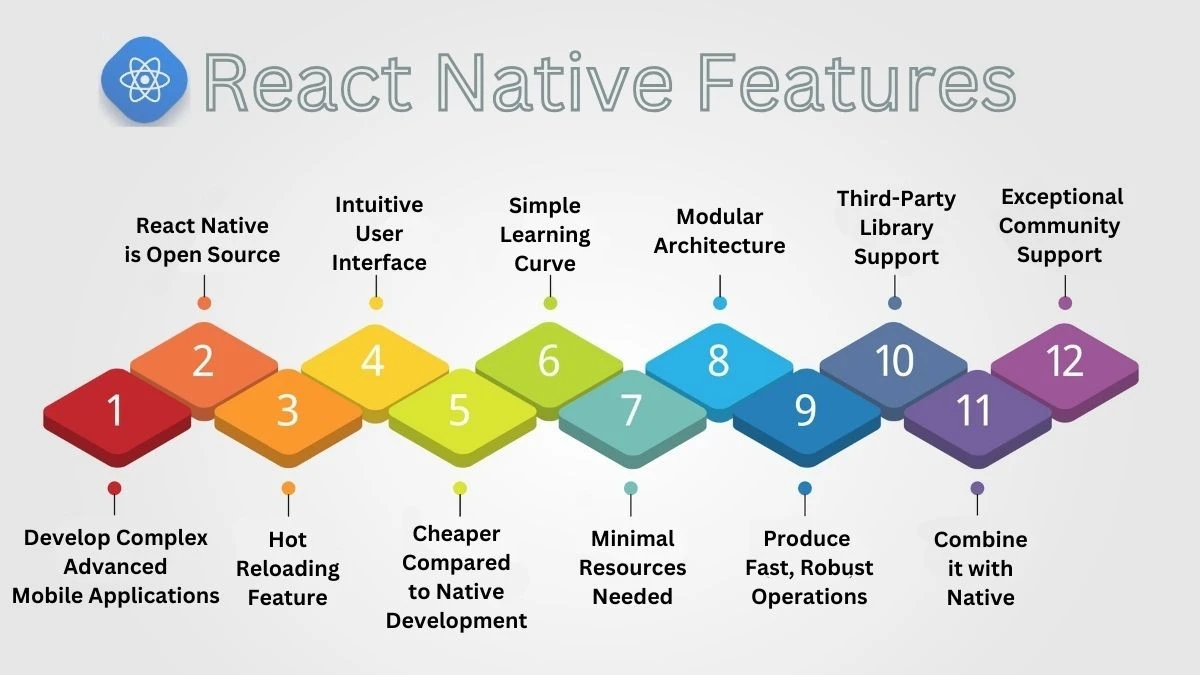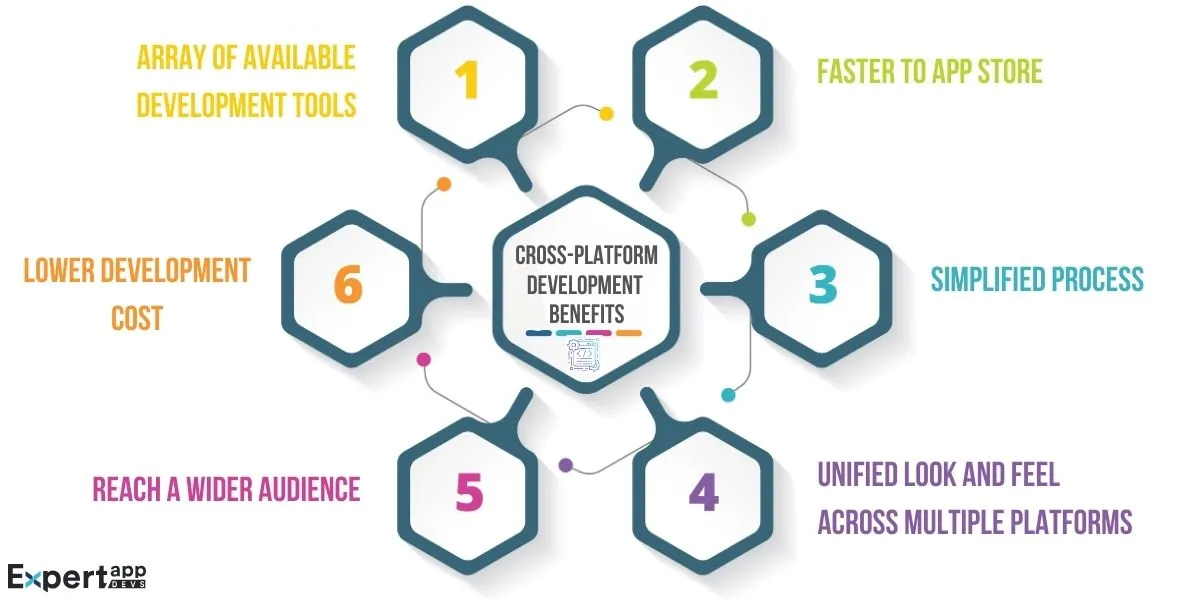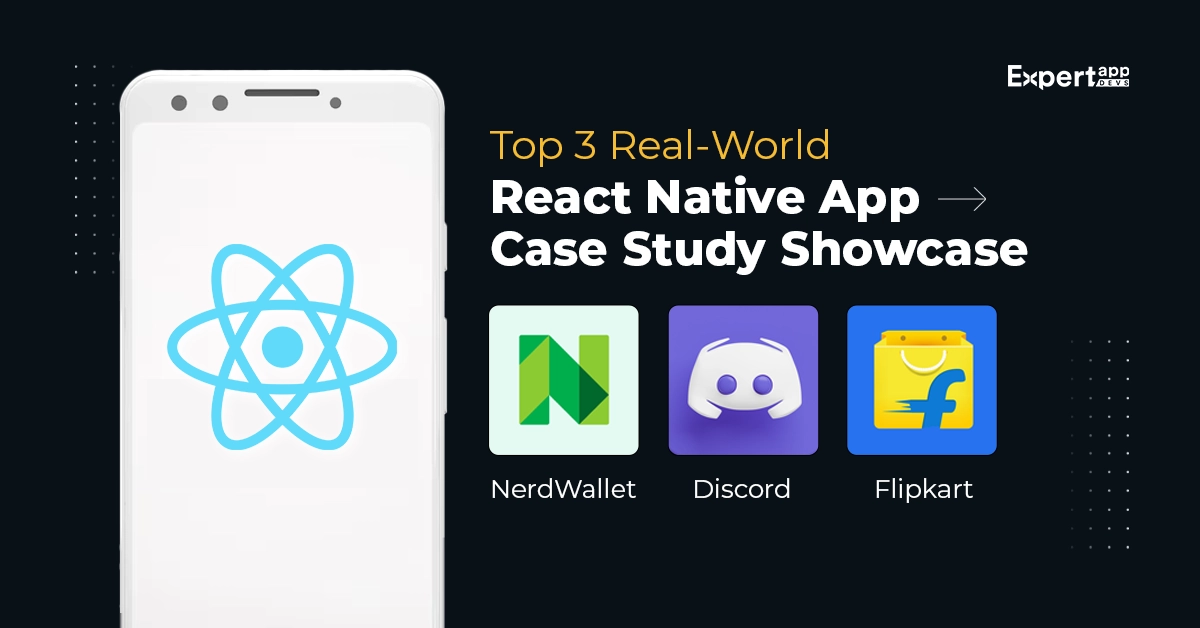Best 3 Real-World React Native App Case Study Showcase
Developing a mobile app can benefit businesses and enterprises. You can serve your customers in a better way. You can improve user engagement. You can streamline your processes and operations.
With a good and feature-rich mobile app, you can get a competitive edge over others. Millennials love mobile apps with in-app payment options and checkouts.
You can go two ways regarding mobile app development- Native or Cross-Platform. Developers build native apps for a specific platform. On the other hand, developers can build cross-platform apps with a single codebase for multiple platforms.
Cross-platform apps offer a native-like experience and are cost-effective as well. Also, developers can build cross-platform apps in a short span of time. React Native is one of the most popular cross-platform app development frameworks. If you check out the React Native showcase, you will find many prominent companies have used React Native.
We will discuss React Native, its benefits, and three React Native app case studies. to understand how React Native can help accelerate your business growth and give you a competitive edge.
What is React Native?
React Native is a Facebook-owned JavaScript framework used for cross-platform app development. You can use React Native to build high-end, feature-rich, natively-rendered mobile apps for Android, iOS, and Windows platforms. It is based on React, the JavaScript library developed by Facebook to create impressive and immersive user interfaces.
Instead of building websites, React Native can develop mobile apps with a single codebase. Mobile apps made with React Native are high in performance and speed and offer a native-like experience to users.
Developers use a blend of JavaScript and XML, also known as JSX, to write React Native apps. Then, React Native silently invokes native rendering APIs in Objective-C and Java for iOS and Android. React Native can expose JavaScript interfaces for platform APIs to use features like camera, user’s location, and other features.
React Native can help developers to build tailor-made, user-centric, and versatile cross-platform apps. All you need is a team of expert React Native developers with prior experience in the domain.
You can check the React Native app showcase to learn about various apps made with React Native.
Benefits of React Native
The React Native framework perfectly and smartly combines the native development features and flexibility and efficiency of JavaScript.

#1. Develop Complex Advanced Mobile Applications
Go with React Native if you wish to build a feature-rich cross-platform app for your business. It has a component-based interface to develop high-quality mobile applications. Not just that, React Native also helps developers by simplifying complex algorithms into simple formats. Along with that, developers can also make quick changes in two cross-platform apps simultaneously with React Native.
#2. React Native is Open Source
React Native is an open-source framework with libraries and plugins to help developers build advanced mobile apps. It comes under an MIT license. Developers can easily access, modify, and improve the React Native code as it is an open-source framework. Also, developers can use third-party libraries and plugins to develop React Native mobile apps.
#3. Hot Reloading Feature
This feature allows developers to see changes in the code in real time on the device. Developers can easily inject the code into the running app without restarting it.
Developers can easily tweak various UI components and styles without rebuilding them every time. This saves their time and effort and quickens up the development process.
#4. Intuitive User Interface
React Native’s front-end UI library has various pre-built declarative elements. The main aim is to make the interface more immersive, impressive, and intuitive.
This is the reason Facebook, Instagram, and Microsoft Office use React Native to build adaptive apps for their customers.
#5. Cheaper Compared to Native Development
Using React Native templates, you can develop Android and iOS apps with a single codebase. Here, you need to write code once, and then you can use codebase to build two separate apps.
It reduces the app development cost to a great extent. Also, you don’t need to hire two separate teams for Android and iOS to develop two apps. It further reduces the app development costs.
#6. Simple Learning Curve
React Native is built with JavaScript and React. If a developer is familiar with these two technologies, you can easily adapt React Native and start working with it. JavaScript is a popular programming language and you will have no issues finding the right and expert JavaScript developers.
#7. Minimal Resources Needed
With React Native, developers can easily create stunning and powerful apps efficiently and without any hurdles. They can create highly advanced features and functionalities with pre-built React Native components. It reduces the efforts and time required to develop an app.
Furthermore, with a single codebase, developers can easily develop two separate apps for Android and iOS. React Native apps are highly consistent and offer a seamless user experience.
#8. Modular Architecture
One of the significant features of this powerful framework is that it allows developers to design various modules with advanced features. These modules are the sections of the code that developers can reuse to create similar features.
Read More: How to Use MVVM in your React Native Application?
#9. Produce Fast, Robust Operations
You cannot survive this cut-throat competition without a fast, lightening, and highly responsive mobile app. With React Native, it is possible to create such powerful apps. It offers developers many benefits to create dynamic and user-centric mobile apps. Compared to other frameworks, React Native offers mobile apps that excel in performance and speed.
React Native uses the APIas to connect the native factors of the operating system to enhance the app’s performance.
#10. Third-Party Library Support
With React Native, developers don’t need to build apps from scratch and it is a welcome change. Developers can use various third-party plugins and libraries to build features and functionalities for the app. It does not just save time but also helps developers to create advanced features for an app.
Some third-party libraries are written in JavaScript, and some are native modules that can be run directly on the device. With these libraries, developers can avoid web view components that can reduce the speed and performance of the app.
#11. Combine it with Native
With React Native, developers can quickly develop mobile apps integrated with the existing native code. Developers can use JavaScript and leverage the advantages of native components as well. Many organizations and businesses use React Native to improve their apps’ performance and speed.
#12. Exceptional Community Support
As React Native is a brainchild of Facebook, you have good community support. Also, there is sophisticated documentation to help developers build advanced mobile apps. Developers can easily reach out to these resources when they are clueless or find any issues during the app development process.
Thousands of developers contribute to the community to help fellow developers solve development issues and hurdles.
What Are the Benefits of Cross-platform App Development?

#1. Array of Available Development Tools
Cross-platform apps offer the best speed and performance. Various advanced tools are available to help developers build dynamic, cross-platform applications. Some tools are Xamairn, React Native, Ionic, Flutter, Titanium, etc.
You can choose any of these tools after carefully evaluating their benefits, limitations, and project requirements.
#2. Faster to App Store
You can reduce the app-to-market time significantly using these cross-platform development tools. For example, React Native is a cross-platform app development framework that helps developers build apps.
#3. Simplified Process
The process of cross-platform app development is straightforward. You can build apps for various platforms with a single codebase.
Startups and businesses with budget constraints can go for cross-platform app development. it is cost-effective to build high-quality, tailor-made, and highly dynamic apps.
#4. Unified Look and Feel Across Multiple Platforms
Consistency is the key when using mobile apps on different platforms. Even if you have developed a cross-platform app, offering a consistent user experience on both devices is a must.
Furthermore, the cross-platform app development approach helps developers create separate UI/UX for your apps as per the platform requirements.
#5. Reach a Wider Audience
Android and iOS are the most popular mobile app platforms. Android has over 3.55 million apps in the Google Play Store. On the other hand, Apple has more than 1.64 million apps. Even the Amazon Store has 480K+ apps.
The best benefit of developing a cross-platform app is reaching a wider audience with almost no marketing budget. If you have a versatile app that can appeal to your audience, the sky is the limit for you. You can engage and uniquely serve your audience and win their loyalty and trust.
#6. Lower Development Cost
Experienced cross-platform app developers will not take much time to build high-performance mobile apps. Furthermore, the approach allows developers to reuse a large part of the code to develop mobile apps for Android and iOS. they can reduce the app development time by a significant margin.
Top Three React Native Case Studies
Now is the time to discuss a React Native case study. We will discuss three popular React Native mobile apps, how they have used the framework to build apps, challenges, and benefits.
#1. NerdWallet
NerdWallet is one of the most promising financial apps that offers users various tools and guidance about financial matters. The company offers various financial services and products, such as credit cards, loans, mortgages, insurance, etc.
NerdWallet, in 2016, decided to develop mobile apps for Android and iOS platforms. They have launched their first app called NerdWallet Credit Score in 2016. It was built with React Native and Firebase, a platform that offers developers high-end tools for testing, deploying, and building mobile applications.
Users widely appreciated the app and got fantastic reviews on the Apple Store and Google Play Store. The app excelled in everything, like speed, stability, and security.
After the success of NerdWallet Credit Score, they decided to launch its second app called NerdWallet Money Manager. This app was also built with React Native and Firebase. It also added some features and functionalities to the Credit Score app.
In 2018, they combined two apps and launched a unified app called NerdWallet. The app has all the features of both apps. In addition to that, they added some more functionalities like a personalized news feed, financial calculators, product comparisons, and many more.
Challenges
#1. Native Integration
The native integration as React Native does not support all the native components and features of Android and iOS platforms. For example, if you want to build a push notification feature with React Native, it is not possible. Developers have to use native modules or third-party libraries to have these features.
#2. Performance Optimization
Sometimes, React Native apps face some performance issues like slow loading time, UI lagging, etc. Developers must work hard on issues like code quality, performance testing, and debugging tools to offer lightweight apps.
#3. Upgrading Dependencies
As Facebook backs React Native, new React Native versions keep coming. Upgrading the app with each new version might be a struggle for developers as they have to work on compatibility issues. Developers must be extra careful and follow authentic documentation while developing the app.
Benefits of Migrating to React Native
Though developers at NerdWallet faced many challenges; the benefits outlined the challenges. Some of the benefits are discussed here:
Code Reuse: React Native allows developers to reuse the same codebase to build mobile apps for Android and iOS. It reduced the development time and cost significantly.
Developer Experience: Developers at NeedWallet had a great time developing the mobile app. The journey was smooth as React Native offers superior features like Hot Reload, Hot Restart, Live Reload, and Debugging tools. With such excellent tools, developers can identify and fix bugs instantly.
User Experience: NerdWallet users love the app as it excels in all the departments, like performance, loading speed, and others. The NerdWallet app has over 1 million downloads on Android and iOS platforms and has received some fantastic reviews.
#2. Discord
When discussing the React Native case study, we have to discuss Discord. Discord was a dedicated messaging and voice-calling platform for online gamers. However, it became a highly popular platform after Stack in the arena. Hence, they decided to start a mobile app that can work seamlessly on Android and iOS platforms.
First, they went to develop native apps for Android and iOS. However, they soon pivoted and chose to go for cross-platform app development. Discord was one of the first companies that chose React Native as their mobile app development framework.
It was in 2015 when React Native was a relatively new framework still in its baby pants. However, even today, developers at Discord are happy with this decision for various reasons. It has over 10 million downloads on the Google Play Store, and its iOS app has a 4.8-star rating.
Challenges
#1. The journey was smooth and streamlined when developers built the iOS app for Discord from the React web app. They enjoyed the fantastic features of React Native and incorporated all the essential features and functionalities. Also, the iOS developers were familiar with React, so it was smooth sailing for them to work with React Native.
#2. However, we are discussing about 2015, when they developed the app. The app performed fine on an iPhone 5s in 2015 when they launched it. However, in 2019, it was not even functioning moderately on the four-year-old iPhone 6s. The app was degrading across several issues like frame drops, battery issues, time to interaction, etc.
#3. This was a challenge for developers. They decided to identify and fix these issues to achieve performance, speed, and other aspects of a successful app.
Solution
They performed various optimizations in a total of five phases:
Flux store optimization
- User Actions
- Message Actions
React Component Optimizations
- Commit Passes
- Direct Message Rendering
- Pure Component
- Fast List
Main Thread Optimizations
- Emoji Picker
- Image Loading
- Battery Heat
Perceived Performance Optimizations
- Navigation Drawers
- RAM Bundles
Results
They were quite happy as all the performance indicators were in good shape. The overall performance of the app was improved drastically.
You can check these Before and After videos on an iPhone XS to see how they benefited from React Native. Some of the points to mention are:
- They have a good and consistent 60 FPS across their supported devices.
- Reduction in battery consumption to a great extent.
- A noticeably improved performance of the app.
- Because of enabling RAM bundles, They were able to reduce the loading time to an average of two seconds.
#3. Flipkart
Flipkart is one of the leading ecommerce players in India, with over 100 million downloads. Every week, the app gets 400+ million visits and it is a commendable score. It is the second largest ecommerce player after Amazon in India.
They started their journey to adopt React Native in 2016. We will discuss the challenges and benefits of adopting the React Native framework for this company.
Challenges
Flipkart is not just about ecommerce; it has some excellent features like videos, social media, and games. Here is a list of the challenges they faced.
#1. Increased Development Effort
Earlier, Flipkart had uniform features and designs. They developed features and pages for their website only once. Now, for mobile apps, they have to design mobile features for Android and iOS separately. It required more effort and time for developers and also generated productivity issues.
#2. Delayed Experiments and Bug Fixes
They also noticed increased time for the adoption, especially while designing the app for Android. They had to wait for adoption to run AB experiments and bug fixes. Such experiment delays might impact user experience negatively, especially on crucial days like “Big Billion Days.”
#3. Experience with React Native
They had a fulfilled and positive experience working with React Native. They released their first version, and RecyclerView and UICollectionView backed it. In the later versions, they built recyclerlistview in JavaScript only.
Then, they read all the comments on the source code and worked on them. They fixed memory leaks and other issues. Furthermore, they successfully migrated their complex pages on React Native without any performance and speed issues.
They set targets first and then checked out whether React Native can match it or not. They have determined to go with React Native if it maintains or does better than the existing loading time.
In the initial phase, the Android version failed to match the page load metrics compared to Native. They made some changes discussed below:
- They reused React Native Managers and built them again while switching between stacks.
- They also made the React instance available before the page loading started. It helps create React context before the page is built with React Native opens.
The interesting trivia is that they have kept their home page Native. The reason is the loading time for a React Native home page was slower compared to the Native. The difference was almost 300-500ms. So, they have decided to keep the home page native.
Some takeaways from the React Native Migration
- Remember all the platforms while designing cross-platform components and native dependencies. Ignoring it might cause behavior inconsistencies.
- Hire platform experts to work on nuances of the platform and other requirements.
- TypeScript worked well for Flipkart to manage its large codebase.
- While moving the mobile site to React Native web, they had some issues. They learned that the code structure was not appropriate for lazy loads as they designed it for native mobile apps. They are restructuring the code while using server-side rendering to optimize the performance of first loads.
Conclusion
React Native is the first choice of developers across the globe for cross-platform app development. It saves time and reduces the costs of developing an app to a significant degree. Furthermore, it has some amazing libraries and supports third-party tools and plugins. Features like Hot Reload, Hot Restart, Live Reload, and others reduce the app development time and bring accuracy to the table.
We have discussed three case studies from the React Native Showcase. It will help you understand why React Native is the best choice for cross-platform app development.
Expert App Devs is a leading React Native app development company. We have a team of talented and dedicated React Native developers for your project.
 Jignen Pandya
Jignen Pandya




